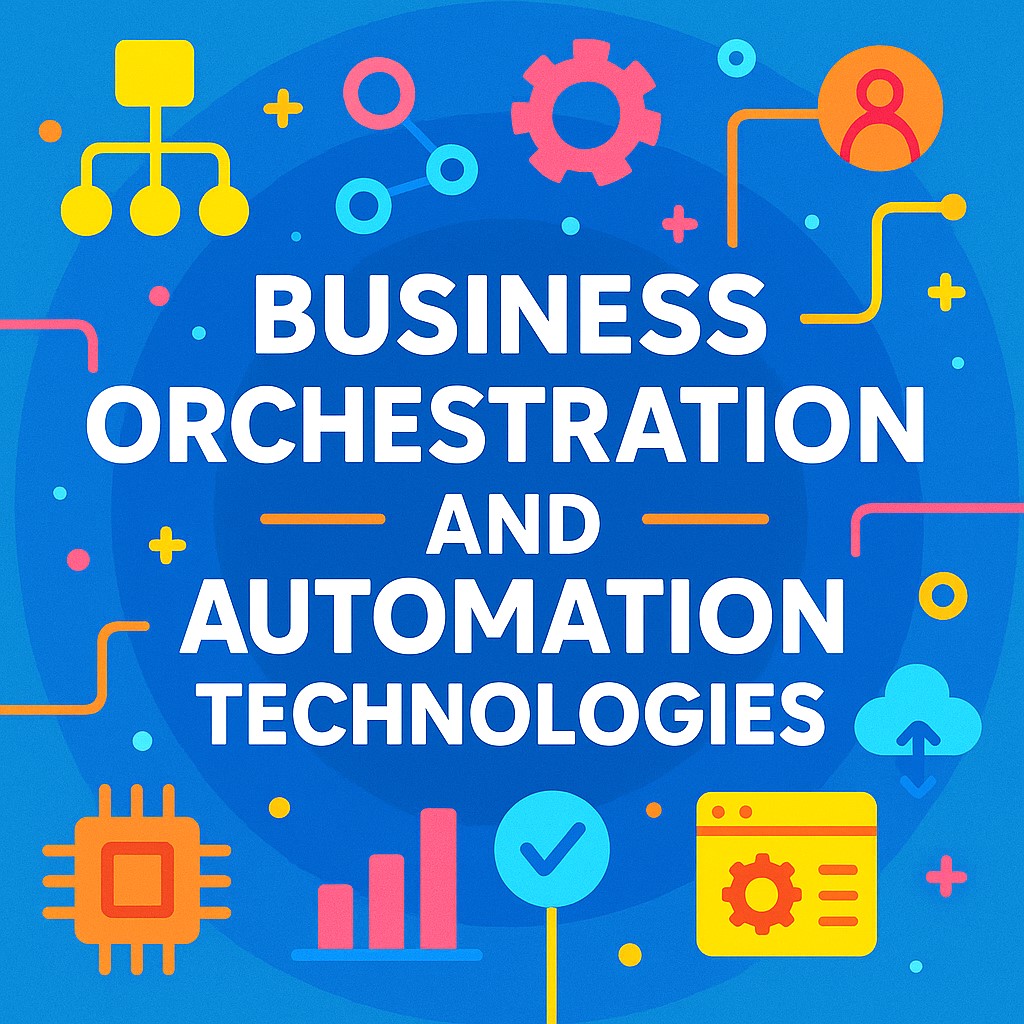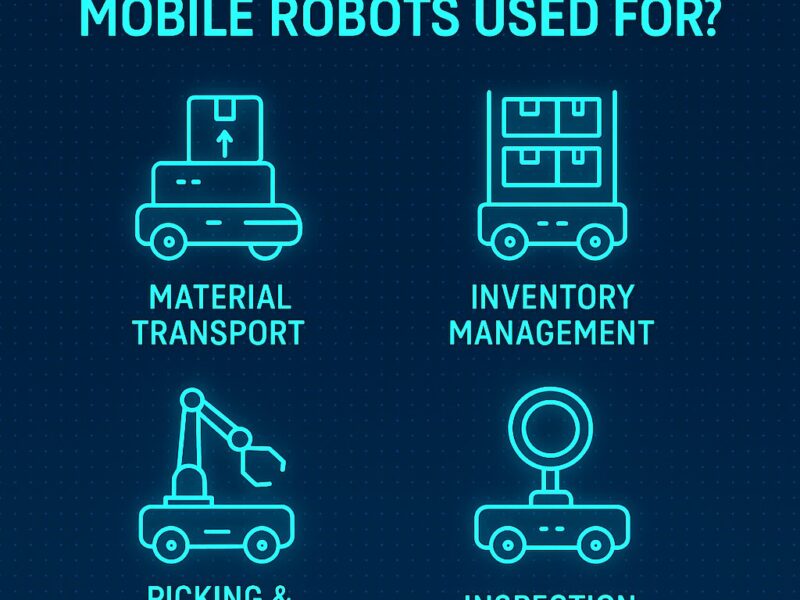Business Orchestration And Automation Technologies

In the modern digital economy, businesses must operate at high speed while minimizing errors and resource waste. This has created a growing demand for business orchestration and automation technologies—two complementary forces that streamline operations, reduce manual workload, and create more scalable systems.
Business orchestration refers to the coordination and integration of complex business processes across multiple departments, systems, or platforms. Automation, meanwhile, involves using software and technologies to carry out repetitive tasks without human intervention. Together, they form the backbone of digital transformation efforts across industries.
What Is Business Orchestration?
Business orchestration involves managing and coordinating workflows, systems, data, and communication channels to ensure seamless operation across the organization. It connects fragmented systems and automates decision-making pathways to improve operational efficiency.
Unlike basic automation, which typically focuses on single-task execution, orchestration is about managing entire process flows. It ensures that multiple automated tasks interact smoothly, even across different platforms.
For example, an order fulfillment process might include inventory checking, shipping label generation, customer notification, and payment confirmation. Orchestration ensures all these steps are aligned, automated, and monitored from a central control point.
Benefits of Business Orchestration
-
Improved Operational Efficiency
Businesses save time and reduce human error by integrating and automating complex processes. -
Faster Decision Making
Real-time data flow between departments enables quicker, data-driven decisions. -
Better Resource Allocation
Automated systems allow staff to focus on strategic tasks rather than repetitive work. -
Scalability
As organizations grow, orchestration helps them scale operations without significantly increasing overhead. -
Consistency and Compliance
Orchestrated processes reduce variability and ensure regulatory procedures are followed correctly.
What Are Automation Technologies?
Automation technologies refer to tools and platforms that perform tasks with minimal human intervention. These can range from simple scripts that automate data entry to advanced machine learning algorithms that predict customer behavior.
Automation is typically categorized into three types:
-
Task Automation – Automating routine, repetitive actions (e.g., sending invoices).
-
Process Automation – Automating multi-step workflows (e.g., employee onboarding).
-
Intelligent Automation – Using AI to make decisions and handle unstructured data (e.g., chatbots or fraud detection systems).
Technologies often used in business automation include:
-
Robotic Process Automation (RPA)
-
Business Process Management (BPM) tools
-
Low-code platforms
-
Application Programming Interfaces (APIs)
-
Artificial Intelligence (AI) and Machine Learning (ML)
How Orchestration and Automation Work Together
While automation executes tasks, orchestration manages how and when those tasks happen. Together, they form a complete solution for managing modern workflows.
For instance, in a customer service scenario:
-
A chatbot (automation) gathers customer data.
-
That data is sent to a CRM system.
-
The orchestration layer routes it to the right department.
-
A support ticket is generated automatically.
-
The system notifies the customer once the issue is resolved.
This integrated approach reduces friction, eliminates delays, and enhances the customer experience.
Key Components of Business Orchestration Systems
-
Workflow Engine
The brain behind orchestration, it defines and runs the sequence of actions. -
Integration Layer
Connects different software, databases, and services via APIs or middleware. -
Monitoring Dashboard
Tracks performance metrics, failures, and provides real-time analytics. -
Rules Engine
Uses predefined conditions to determine how the workflow should behave under different scenarios. -
Notification Systems
Triggers alerts and updates for internal users or external customers.
Industry Applications of Orchestration and Automation
1. Finance and Banking
Automates compliance checks, loan processing, and fraud detection while orchestrating data flow across financial systems.
2. Healthcare
Streamlines patient registration, claims processing, and appointment scheduling with minimal human input.
3. Retail and E-commerce
Orchestrates inventory, sales, shipping, and customer communications in real-time.
4. Manufacturing
Connects supply chains, production lines, and quality control systems into unified workflows.
5. Telecommunications
Manages customer provisioning, billing automation, and service request handling efficiently.
Choosing the Right Automation Platform
Not all automation platforms offer full orchestration capabilities. When evaluating tools, businesses should consider:
-
Ease of Integration – Can it connect with your current software ecosystem?
-
User Interface – Is it user-friendly for both developers and non-technical staff?
-
Scalability – Will it handle your future needs as your business grows?
-
Security and Compliance – Does it meet industry data standards and protocols?
-
Monitoring and Reporting – Can it provide real-time feedback and track performance?
Selecting the right platform ensures a future-proof infrastructure that supports both current and long-term goals.
Common Challenges in Implementation
-
Data Silos
Without proper integration, automation efforts may be limited by isolated systems. -
Change Management
Employees may resist new tools. Effective training and communication are vital. -
Over-automation
Automating everything without strategy can lead to rigid processes that are difficult to adapt. -
Security Risks
Improperly configured systems may expose sensitive business or customer data. -
High Initial Costs
Implementation can require significant investment, but long-term ROI is often substantial.
Future Trends in Orchestration and Automation
As technology advances, business orchestration and automation are becoming more intelligent and proactive. Some emerging trends include:
-
Hyperautomation
A combination of RPA, AI, and machine learning to automate end-to-end business processes. -
Event-Driven Architecture (EDA)
Systems that respond in real-time to external or internal events. -
No-Code/Low-Code Automation
Platforms that empower non-developers to create automated workflows visually. -
Autonomous Orchestration
Using AI to dynamically adjust and optimize process flows without human intervention.
These innovations will push the boundaries of what businesses can automate, helping organizations stay competitive in a fast-changing world.
Conclusion
Business orchestration and automation technologies are no longer optional—they’re essential for organizations that want to thrive in a digital-first world. By connecting systems, streamlining workflows, and reducing manual effort, these technologies free up human capital to focus on innovation, strategy, and customer relationships.
Whether you are a startup or an enterprise, adopting smart orchestration and automation tools can lead to significant operational improvements, cost savings, and faster scalability. The key is to start small, test rigorously, and evolve based on data insights and business needs.
✅ Key Takeaways
-
Business orchestration involves managing and coordinating entire workflows across systems, tools, and departments to ensure seamless operations.
-
Automation technologies perform repetitive and rule-based tasks with little or no human intervention, improving efficiency and reducing human error.
-
Orchestration and automation work together—automation handles the tasks, while orchestration manages the flow and timing of those tasks.
-
Common automation tools include RPA, BPM platforms, low-code systems, APIs, and AI-driven tools.
-
Key components of orchestration systems include a workflow engine, integration layer, rules engine, monitoring dashboard, and notification system.
-
Business orchestration and automation are used across industries such as finance, healthcare, retail, manufacturing, and telecommunications.
-
Benefits include cost savings, faster decision-making, enhanced scalability, compliance, and resource optimization.
-
Implementation challenges include data silos, change resistance, security risks, over-automation, and upfront costs.
-
Choosing the right platform requires evaluation of integration capabilities, usability, scalability, security, and analytics features.
-
Future trends include hyperautomation, event-driven architecture, no-code tools, and autonomous orchestration using AI and machine learning.
References
https://en.wikipedia.org/wiki/Business
https://en.wikipedia.org/wiki/Automation
Links License – https://en.wikipedia.org/wiki/Wikipedia:Text_of_the_Creative_Commons_Attribution-ShareAlike_4.0_International_License
Dear Friends, welcome you to visit link below for more fun and interesting technology content. Thanks For Your Support.
https://techsavvo.com/category/blog/

